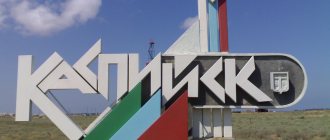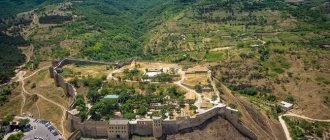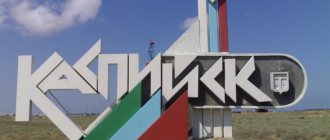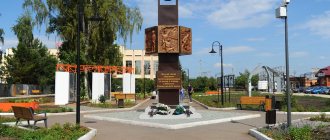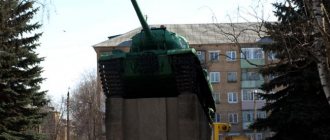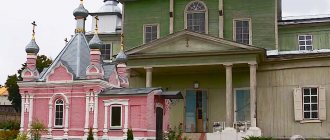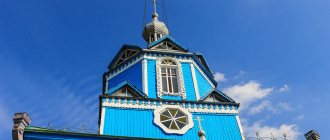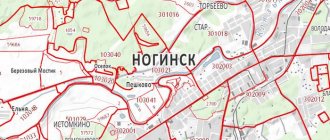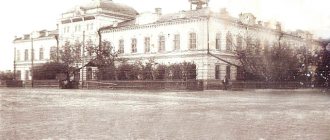In this article, we have collected the most complete and reliable information about the regions of Makhachkala from all possible resources: the experience of our travelers, official sources, reviews, comments, answers to frequently asked questions. You will find all this in our publication in a structured form. Convenient and detailed. Important: as soon as new data, reviews and any information appear about the districts of Makhachkala, we immediately add all this to this post so that you do not have to look for additional information yourself. With TravelAsk you are always up to date with the latest information.
Juma Mosque in Makhachkala
Three districts of the city on the Caspian Sea
The capital of Dagestan is rapidly gaining momentum as a tourist Mecca of the North Caucasus. Situated on 468 square kilometers, Makhachkala is a major economic, scientific and cultural center of the Russian south and the largest city in the region. The modern city on the Caspian Sea is geographically divided into three districts:
- Leninist;
- Kirovsky;
- Soviet.
Their main feature and difference from the areas of other Caucasian cities is the constant population growth and rapid economic and social development.
Gender and age
Considering the distribution of residents of Dagestan by gender, it is worth noting that per 1000 men there have been the following number of women over the past 15 years:
- 2005 – 1070 female residents.
- 2012 – 1080.
- 2015 – 1077.
- 2017 – 1074.
As can be seen from the data presented, this number has remained virtually unchanged throughout the 2000s. But as for age, it is interesting not only what the number of residents is in the republic, but also how it is distributed among different age groups for 2016:
- From 0 to 14 years – about 25%.
- From 15 to 29 years old – 26.1%.
- From 30 to 44 years old – 21.2%.
- From 44 to 54 years old – 18.9%.
- From 55 to 69 years old – 14.7%.
- Over 70 years old – slightly more than 4%.
Industrial Leninsky
It is located in the south of the city and is considered its production center. There are 24 industrial enterprises in Leninsky. Their area occupies half of the district. The second half is residential.
Population: 207.5 thousand people.
The area has well-developed social and cultural spheres. There are kindergartens, schools, hospitals, hotels. For tourism the following will be of interest:
- Two city beaches along the Caspian highway.
- Drama Theater.
- Hippodrome.
- Several monuments, including the “Russian Teacher”, opened here in 2006.
- Rhodope Boulevard is 2 kilometers long. Known for its green alleys and historical monuments.
- Suleyman Stalsky Boulevard with a copy of the Petrovsky Lighthouse.
- Several museums.
- Mosques.
- Lake Ak-Gel.
THIS IS INTERESTING. According to legend, on the site of the Petrovsky Lighthouse, Peter the Great once laid the first stone of the future city. Then it was the Port-Petrovsk fortress, which later became Makhachkala.
Monument to the “Russian Teacher” in the center of Makhachkala
Several microdistricts can be distinguished in the residential area of Leninsky.
Reduktorny village
There are two types of buildings in Reduktornoye - five-story Soviet “panels” and modern multi-story new buildings. The area is being actively developed with new residential complexes with their own infrastructure. Prices per square meter start at 55 thousand rubles. The advantage of the area is its location. The Caspian Sea stretches on one side, Lake Ak-Gel on the other. There is a large park next to the lake. The village has the necessary social, sports, educational and cultural facilities.
Development of the village of Reduktornoye
New Khushet
The young microdistrict stands on the border with the neighboring city of Caspian Sea. Initially, the village had exclusively a private sector, but today there is active construction of new housing stock. Mostly cottage villages are being built. And because of its proximity to the sea, developers of hotel complexes became interested in the place. The disadvantage of Khushet is the undeveloped infrastructure and lack of green areas. A square meter of real estate will cost around 40 thousand rubles.
Typical building of New Khushet
New Kyakhulai
A quiet village in the north of the region with well-developed infrastructure. The buildings are mostly private, with 2-3 storey cottages predominating. People come here for the silence and views - the village looks like an ancient village. There are practically no young people here. Kähulay borders with modern residential areas. The average price of a cottage of 150 square meters is from 10 to 12 million rubles.
Border of Kyakhulai village and modern residential areas
Center
The two busiest and most expensive streets in the city are Gamzatov Avenue and Shamil Avenue. They pass through the Sovetsky and Leninsky districts. The streets are densely built. There is no room for new buildings here, so secondary housing is highly valued. The average price per square meter of real estate is 95 thousand rubles. The center has a developed infrastructure and the main city attractions. The downside is the most difficult traffic in Makhachkala, noise and exhaust fumes. THIS IS INTERESTING. On the border of the Leninsky and Sovetsky districts there is the Fifth Village microdistrict. It is called the most crime-prone place in the city.
Imam Shamil Avenue in Makhachkala
What is the population of the city of Makhachkala?
| Urban district of the city of Makhachkala | 737 031 | 703 546 | 33 485 |
| Makhachkala | 604 266 | 604 266 | 0 |
| inner city areas: | |||
| Kirovsky district | 186 694 | 186 694 | 0 |
| Leninsky district | 208 297 | 208 297 | 0 |
| Sovetsky district | 209 275 | 209 275 | 0 |
| Alburikent village | 12 812 | 12 812 | 0 |
| Kyakhulai village | 7 473 | 7 473 | 0 |
| Tarki town | 15 931 | 15 931 | 0 |
| urban village Leninkent | 16 862 | 16 862 | 0 |
| Semender town | 14 793 | 14 793 | 0 |
| Sulak village | 8 636 | 8 636 | 0 |
| Shamkhal village | 12 285 | 12 285 | 0 |
| urban-type settlement New Kyakhulai | 10 488 | 10 488 | 0 |
With the population of the city of Makhachkala as of January 1, 2022, how many people live in this territory, people in municipalities and this locality, this territorial unit of the Russian Federation, that’s what we figured out here, we made our contribution to satisfying the requests of those interested in this statistical information .
Unfavorable days in 2022, difficult for health and well-being
Lunar calendar for hair cutting 2022, favorable days to cut hair
Central Soviet
This is the most densely populated district of Makhachkala. Almost 209 thousand people live there.
The Sovetsky district has the most developed infrastructure in the capital. Schools, kindergartens, universities, stadiums, hospitals, shops and other cultural and social organizations are open. There are four industrial enterprises.
Most of all city attractions are located in Sovetsky:
- Mount Tarki-Tau 720 meters high. From the observation deck at the top there is a view of the Caspian Sea and Makhachkala.
- Makhachkala lighthouse, built in 1852
- Lenin Square, on which the buildings of the Government, Administration and Ministry of Internal Affairs of the republic stand.
- Temple of Prince Vladimir, built in the so-called “Dagestan style”.
- The puppet theater is the only one in the Republic.
- Sheikh Shamil Mosque.
- Mount Anzhi-Arka.
- Several theaters, including the first Russian theater in Dagestan by Maxim Gorky and the Kumyk theater by Salavatov.
- Numerous monuments. The military and Soviet ones are especially interesting.
- Museums. Among them are the multimedia “Russia - My History”, the Museum of Fine Arts and the “Dagestan Village”.
- State Philharmonic.
- Juma Mosque, accommodating up to 15 thousand people. It was built inspired by the Blue Mosque in Istanbul.
- Market No. 2.
- Parks and squares, including the central city park of the Lenin Komsomol, opened in 1887 and occupying 30 hectares. The Walk of Fame, the Eternal Flame and other military monuments are interesting on the territory.
“Dagestan style” of the Church of St. Vladimir Equal to the Apostles
THIS IS INTERESTING. Market No. 2 is considered one of the main attractions of Makhachkala. They even take tour groups there. It is in many ways reminiscent of the bazaars in Turkey. You can find any products there and save money.
Sovetsky is the cultural and economic center of the city. The buildings here are mostly post-Soviet. Most of the housing stock is five-story panel houses. There are several new buildings.
Second market of Makhachkala
Separator
Along the avenue separating the Sovetsky and Kirovsky districts, there is a sleeping Separatorny, named after the plant of the same name. The area is quite lively and developed. Here is the most affordable real estate in the city. The average price is 22–28 thousand per square meter.
Akushinsky Avenue, on which the area stands, connects the entrance and exit from the city, so it is always noisy here. Another disadvantage is exhaust gases from traffic flow.
Akushinsky Avenue in Makhachkala
Oil workers town
A large residential area is located in the city center. Its main difference is silence, security and developed infrastructure. Nearby is the Lenin Komsomol Park and the historical center of the city. The development is mostly private. Elite cottages of large footage with adjacent land plots. The cost of 100 square meters averages from 10 million rubles. There are several modern high-rise buildings. Apartments there cost an average of 80 thousand per square meter.
Leninsky Komsomol Park
THIS IS INTERESTING. Residents of Makhachkala do not favor the territory along Akushinsky Avenue. In addition to the constant transport collapse, the area has many utility problems. Things are especially bad in the fall, when the rainy season begins. Each time the area is actually “flooded”.
MAKHACHKALA
Rosfoto / K. Skorobogatko Makhachkala. Panorama of the city.
MAKHACHKALA, a city in Russia, the capital of Dagestan. Population 601.3 thousand people (2019). Located on the Primorskaya Lowland, at the foot of Mount Tarkitau. Seaport on the western coast of the Caspian Sea. Railroad station. The Caucasus federal highway passes through Moscow (Krasnodar – Grozny – Makhachkala – border with Azerbaijan). Uytash International Airport.
Story
In 1844, during the Caucasian War of 1817–64, on the Anji-Arka hill near Tarkov, the capital of the Tarkov Shamkhalate, the Russian fortification of Petrovskoye was founded, named in memory of the Persian campaign of 1722–23, organized and carried out by the emperor. Peter I. The construction of Petrovsky pursued several goals: strengthening control over the road passing through Tarki along the Caspian coast to Derbent (the oldest route connecting the countries of the East with the North Caucasus and Russia); increasing the security of the Tarks themselves; protection of coastal territory suitable for the future creation of a seaport. Since 1857, the port city of Petrovsk (the name Petrovsk-Port gradually became established); obeyed commands. troops and the manager of the civilian unit in the Caspian region. Since 1860, it was a district town in the Dagestan region (along with Derbent it had a civil administration). From the 2nd half. 19th century Industry was actively developing in the city, a brewery, 2 tobacco factories were built, in 1861–70 - an artificial harbor and seaport, in 1900 - a paper spinning factory "Caspian Manufactory", in 1914 - an oil refinery. Fishing has become one of the priority areas for the development of the city. In 1894, traffic was opened on the Beslan-Petrovsk-Port railway line, in 1900 - Petrovsk-Port - Derbent, at the end. 1915 – Shamkhal – Temir-Khan-Shura (connected the city with Mountainous Dagestan) of the Vladikavkaz railway.
During the Civil War of 1917–22, Petrovsk-Port changed hands several times. In the end 1917 – March 1918 and April. – Sep. 1918 one of the centers of Soviet power in Dagestan. In the spring of 1918, he was twice engaged in the detachments of N. Gotsinsky. In Aug. 1918 besieged by a detachment of L.F. Bicherakhov (see Art. Bicherakhov) with the support of ships of the Caspian flotilla, occupied by them on October 3, occupied by units of the Turkish army on November 8, became part of the so-called. Mountain Republic (see Art. Mountain Governments) and renamed Shamil-Kala. On May 8, 1919, it was taken by units of the All-Soviet Socialist Republic and was under their control until the spring of 1920. Occupied by units of the Red Army on March 30, 1920 during the North Caucasus offensive operation. In 1921–94 the capital of the Dagestan Autonomous Soviet Socialist Republic, from 1994 - the Republic of Dagestan. By decree of the All-Russian Central Executive Committee dated July 10, 1922, the city was renamed Makhach-Kala (the spelling “Makhachkala” was fixed) in honor of the famous Dagestan revolutionary Magomed-Ali (Makhach) Dakhadaev (1882–9/22/1918; in May–September 1918, military commissar of the Dagestan region). In 1970, the city was seriously damaged by an earthquake. In 1999, the administration and residents of Makhachkala actively contributed to the expulsion of terrorist groups during their invasion of Dagestan.
Architecture
Photo by P. S. Pavlinov Makhachkala. Hotel "Dagestan". 1938–39. Architect G. Grimm.
In the old coastal part of the city there are: a lighthouse at the foot of the Anji-Arka hill (1860s), the Assumption Cathedral in the neo-Byzantine style (1905–06; chapel of St. Alexander Nevsky - 2004), buildings of the 2nd half. 19 – beginning 20th centuries in the spirit of eclecticism (buildings of the public library - 1899–1900, the former women's gymnasium - 1903, etc.). In the 1920s–1930s. active construction of the city was underway, including according to the general plans of 1931 and 1938 with a rectangular grid of streets; the Main Post Office was built in the style of constructivism (1920s), the Government House in the spirit of neo-romanticism using oriental motifs (1927–28, architect I. V. Zholtovsky; now the agricultural academy), the Dagestan hotel in the spirit neo-Renaissance (1938–39, architect G. Grimm). After the Great Patriotic War, an administrative building was built on Leninsky Prospekt (1956, architect A. M. Alkhazov), the Trud stadium (opened in 1958, completed in 1961), the House of Pioneers (1961, architect A. G. Oruskhanov), University (1964, architect Sh. I. Kerimov, G. M. Sheikhov). According to the general plan of 1961 (architect K.V. Chernokozov), the following were organized: Primorsky Boulevard (1962, architects N.I. Ozernaya, A.G. Oruskhanov; now the City Garden with Rhodope Boulevard) with a monument to the poet Suleiman Stalsky (1949, sculptor Kh. N. Askar-Sarydzha, architect Alkhazov) and a drama theater (1967, architect G. Ya. Movchan and others; now the building houses the Avar and Kumyk musical and drama theaters), the central square with the new Government House (1967, architect Alkhazov) and a monument to V.I. Lenin (1960, sculptor Z.I. Azgur, architect G.A. Zakharov). According to the general plan of 1973, a number of buildings were erected for cultural institutions and others. Among the buildings of the 1990–2000s. – Central Juma Mosque (1997), North Caucasus Islamic University. Many houses are decorated with mosaics and high reliefs. Monuments: G. Tsadase (1956, sculptor Askar-Sarydzha, architect A. M. Alkhazov), S. M. Kirov (1975, sculptor B. A. Tanaev, etc.), Dagestan Bolsheviks shot by the White Guards in 1919 (1980 , sculptor G.N. Geybatov), Defender of the Fatherland (2006, sculptor Sh. Sh. Shakhmardanov); in the park named after Lenin Komsomol - a memorial to the soldiers who died in the Great Patriotic War (1976, sculptor Yu. P. Pomer and others, architect V. A. Bederov, under the direction of A. A. Emirbekov), and a monument to the athlete Ali Aliyev (1998, sculptor Geibatov).
Centers of science and culture
The city operates: Dagestan Scientific Center of the Russian Academy of Sciences (1991), including St. 10 scientific institutions, including the Institute of Physics named after. Kh. I. Amirkhanova, Institute of History, Archeology and Ethnography, Institute of Language, Literature and Art named after. G. Tsadasy, Scientific Association “IVTAN”; Dagestan Scientific Center of the Russian Academy of Medical Sciences (1993); Caspian Zonal Research Institute of Veterinary Medicine; scientific and production association "Dagagrovinprom" and others. Dagestan state universities: university (founded in 1931 as a pedagogical institute; since 1957 modern name and status), pedagogical university (opened in 1917; restored in 1931, since 1943 women's teacher's institute, since 1963 Pedagogical Institute, since 1994 modern name and status), Agricultural Academy (founded in 1932 as a fruit-growing institute), Medical Academy (founded in 1932 as a medical institute; building in the neo-Renaissance style, 1935, architect G. S. Tegkaev), Technical University (founded in 1972 as a polytechnic institute, modern name since 1995), Dagestan State University of National Economy (1991); branches of state universities in Moscow, St. Petersburg, Rostov, etc. There are republican libraries: the national one. R. Gamzatov (1900; building - 1974–1997), for the blind (1962), children's (1969), youth named after. A. S. Pushkin (1997), as well as the city library (1930) with 15 branches. Museums: Dagestan State United Historical and Architectural Museum named after. A. A. Taho-Godi (founded in 1923 as a local history museum, since 1977 its modern name), has branches, including the Museum of Military Glory, the Museum of the History of Makhachkala; Republican Museum of Fine Arts named after. P. S. Gamzatova (1958); Museum of the History of Theaters of Dagestan (founded in 1984, opened in 1990).
Theaters: Republican Russian Drama named after. M. Gorky (1925; building - 1984, architect Kh. V. Chkheidze), Kumyk Musical and Dramatic Theater (1930, since 1955 named after A.P. Salavatov), Laksky Musical Drama Theater (founded in 1935 in the village of Kumukh, since 1952 named after E. Kapiev), Avar Musical and Drama Theater (founded in 1935 in the village of Khunzakh, since 1951 named after G. Tsadasa), puppets (1941), Dagestan State Opera and Ballet Theater (1999). State Philharmonic named after. T. Muradova (founded in 1945; its composition includes the Chamber Orchestra, 1988). State Symphony Orchestra, State Choir, State Orchestra of Folk Instruments of the Republic of Dagestan (all 2004). Folk choir of Russian song “Volna” (1957); Song and dance ensemble of Dagestan, dance ensembles: “Lezginka”, peoples of the Caucasus “Youth of Dagestan”. The traditions of the ancient art of tightrope walkers are developed by the groups “Dagestan Rope Walkers” and “Tsovkra”. International Festival of Folklore and Traditional Culture “Highlanders” (since 2004).
Sport
Football club "Anji" (founded in 1991), participant in a number of Russian championships in the Top Division and Premier League (2000–02, 2010–14, 2015–19; bronze medalist in 2013), UEFA Cup (seasons 2000/01, 2012/13 and 2013/14), Russian Cup finalist (2001 and 2013); until 2003 he performed at the Dynamo stadium (opened in 1927, built in 1949, architect A. S. Sahakyan; reconstructed in 1968 and 2000, over 15 thousand seats), after - at the Anzhi Arena stadium (formerly – “Khazar”; located in Kaspiysk; opened in 2003; capacity 26,400 spectators). Other football clubs in the city: Dynamo-Dagestan-Anzhi (founded in 1927 as Dynamo; winner of the RSFSR Cup 1967), Legion Dynamo (2015), Makhachkala (2019).
Farm
Makhachkala is the leading industrial center of Dagestan. The most developed are mechanical engineering, light and food industries; Oil refining and production of building materials are important. The largest enterprises: plant named after. Gadzhiev (ship and oil and gas equipment, pumps, etc.), "Aviaagregat" (airfield equipment and ground support equipment for aircraft, components and components for aircraft, passenger cars), "Eltav" (microcircuits, transistors, etc.), Research Institute " Sapphire" (automatic direction finders, systems for testing on-board navigation equipment), separator plant (products for food industry enterprises), "Russian Radio Electronics Research and Production Complex" (navigation and communication systems, antennas). There are also factories in operation: oil refineries "Caspian-1" and "Dagnotech", paint and varnish products (the only one in Dagestan). Production of furniture (furniture factories "Caspian", "Tronmebel", "Agama", etc.), cotton fabrics ("Caspian Manufactory"), knitted fabric, hosiery ("Dagtextile"); leather dressing, processing of fur raw materials and wool, etc. Among the leading food industry enterprises are the meat processing plant, Makhachkala Hormol (fish products), Makhachkala Bread Product. The production of alcoholic beverages has been developed: the Port-Petrovsk brewery, Kaspiyvinprom, a champagne and wine plant (production of vodka) and Dagestan-Ethanol (production of alcohol). Bottling of mineral waters and production of soft drinks (Start, ARS). House-building plants "Dagstroyindustriya" and Makhachkala; factories: reinforced concrete products and brick (“Silicate”), production of fiberglass.
One of the significant sectors of the city economy is transport services. Makhachkala is the main seaport of Dagestan, dating back to 1870, the only practically ice-free Russian port on the Caspian Sea; includes a dry cargo harbor with a capacity of 3 million tons of cargo turnover per year, berths for general, bulk cargo and containers with a capacity of up to 1.2 million tons per year, a railway and road ferry terminal with a capacity of 1.3 million tons and a grain terminal with a capacity of 0.5 million .tons per year. Main cargoes: mineral and construction raw materials, oil and petroleum products, grain.
Remote Kirovsky
The largest district in Makhachkala is spread over an area of 280 square kilometers. The population is 185 thousand people. Kirovsky includes several microdistricts and villages. There are no tourist attractions in the area, except for the monument to Sergei Mironovich Kirov in the village of Semender. But there are several developing residential areas.
First Makhachkala
The historical part of the city is remote from the center. The development of Makhachkala began from this place. Therefore, there is the largest concentration of post-Soviet five-story “panels” in the city. There is an Orthodox church and several mosques here. Schools, kindergartens and universities. The social sphere is developed. In addition, the microdistrict is located practically on the shore of the Caspian Sea and next to Lake Vuzovsky. The price per square meter depends on the type of property. An apartment in a new building will cost an average of 25 thousand per square meter. “Resale” - from 50 thousand.
Residential area near Lake Vuzovskoye
New town
The microdistrict is located in the very south of the city. There are several modern housing complexes with their own developed infrastructure. The center can be reached in 15 minutes. The new city is one of the fastest growing and developing in Makhachkala. Apartments with views of the Caspian Sea are available here, and the average price for real estate is only 33 thousand per square meter.
Development of the north of Makhachkala
Leninkent
A densely populated urban settlement by the standards of Dagestan - almost 17 thousand people - is located in the very west of the city and is its extreme point. There are several schools, a kindergarten, a clinic and shops. The center of the village is decorated with a mosque. The buildings are mainly manor houses, one or two storeys high. A house of 100 square meters will cost approximately 3 million rubles.
Private development of the Leninkent village
Chechen
The settlement is located on the territory of the island of the same name. In the 19th century, convicts were exiled to the island. At the same time, a leper colony was organized there. After the revolution, the settlement was extremely developed and had constant transport links with the mainland. With the collapse of the USSR, almost all residents left, and transport links disappeared. Today, the local population - just under 200 people - fish and periodically meet savage travelers on their land. The island can only be reached by boat - in the company of local old-timers or poachers common in these places. The main attraction of the island is the Chechen lighthouse, more than 40 meters high. It was built here by the British in 1863. At the end of the 20th century it was made automatic. Today the lighthouse is a strategic site with limited access.
Chechen lighthouse
THIS IS INTERESTING. On the territory of Kirovsky there is the largest military cemetery in the republic, “Old Russian”. Red Army soldiers who were wounded during the Great Patriotic War are buried there. They all died in city hospitals.
Data by year
Looking at population data for different historical periods, starting from 1847, here is the data provided by Rosstat:
- 1847 – 755,615 people.
- In 1897 - 571.154.
- 1926 – 788.098.
- In 1939 – 1,023,300.
- In 1951 - 835.600.
- In 1961 – 1,158,500.
- In 1979 – 1,627,884.
- In 1991 – 1.875.345.
- In 1996 – 2,218,427.
- In 2000 – 2,442,609.
- In 2005 – 2,621,820.
- In 2010 – 2,910,249.
- In 2015 – 2,990,371.
- In 2022 – 3,086,126.
- And in 2022 – 3,110,858.
As can be seen from the data presented, for almost 170 years the population of this region has only increased. The decline was observed only during the 1890s, as well as in the post-war period, due to the losses incurred by the war during the Second World War.
Ecological situation in the regions of Makhachkala
There are no large heavy industrial enterprises in the city. This creates a favorable environmental situation. The exception will be houses and courtyards along central roads. Due to the large traffic flow there is an abundance of exhaust gases. The most polluted place in the city is the waters of the Caspian Sea. “No swimming” signs regularly appear on city beaches. But that doesn't stop the locals. The city has a favorable geographical location. On one side there are mountains, on the other there is the Caspian Sea. Therefore, there is fresh air and sea wind in Makhachkala all year round.
View of the Old Town and Petrovsky Lighthouse
Ethnic composition
Considering the ethnic groups that inhabit the territory of the Republic of Dagestan, it is worth providing the following data in the list:
- The number of Russians in the republic is small and amounts to approximately 3.5%.
- The most numerous is the Nakh-Dagestan group, which includes Tabasarans, Tsakhurs, Lezgins, Avars, Archins and others. In total, about 74% of the republic's population.
- Peoples of the Turkic group also live here - the Nogais, Kumyks and Azerbaijanis. Their total number does not exceed 20%.
- The least numerous are the peoples of the Iranian group, including the peoples of Mountain Jews, Ossetians and Persians, the total number of which does not exceed 1% of the population of the Republic of Dagestan.
Thus, it can be argued that the predominant nationalities of Dagestan in terms of numbers are the indigenous peoples of the republic. And they are followed by the peoples and nations of the territories adjacent to Dagestan.
Questions and answers
In conclusion, we will answer a few questions about the districts of Makhachkala: - How many districts are there in the city? Three. Industrial Leninsky, central Soviet and remote Kirovsky.
— Which district of Makhachkala is considered the city center? Historical Soviet.
— In which area of the city is the most affordable real estate? In remote Kirovsky. It is actively developing. Most of the development is modern high-rise buildings with their own infrastructure.
— Which apartments in Makhachkala are the most expensive? View apartments along the Caspian Sea and Lake Ak-Gel.
— Where is the most favorable environmental situation in Makhachkala? In all areas of the city, except major transport junctions
Population gain or loss according to the census
The total and official population of the city of Makhachkala, how many people live in it as of January 1, 2022, the number of people in each individual urban district and municipality, further in the second table.
| Year | Growth/decrease population city of Makhachkala |
| 2017 | ↗592,976 people |
| 2018 | ↗596,356 people |
| 2019 | ↗601,286 people |
| 2020 | ↗603,518 people |
| 2021 | ↗604,266 people |
| 2022 |
Marriages and divorces
If we briefly describe the statistics on divorces, the following data is given for the indicated population:
- In 2022, the number of marriages in the Republic of Dagestan amounted to 14,748 units, which was 108% as a percentage of the previous period.
- In 2022, during the month of July, 6,079 marriages were concluded, which is slightly lower than in the previous reporting period. But the decrease in the number of newly registered families is most likely due to isolation measures taken during the spread of coronavirus infection.
The final statistics for 2022 can clearly show how the figures for the 2 reporting periods compare.
Walking route around Makhachkala: Getting to know the city center
As a rule, the first visit of tourists to Dagestan begins in Makhachkala. It doesn’t matter whether you arrived here by plane or by train, take the time to walk around the center of the capital. The city has many interesting architectural monuments, beautiful parks, and walking avenues.
Pedestrian street Buynaksky
© Julia Alisova
It’s convenient to start your acquaintance from the Makhachkala railway station building.
Near it there are many iconic attractions: Kumyk Musical and Drama Theatre, Rhodope Boulevard, city beach, Buinaksky promenade. They're worth a little time and even a snack if you're hungry.
From physical hunger to spiritual. Here, in the historical center of Makhachkala, there is a popular museum.
National Museum of the Republic of Dagestan named after. Tahoe-Godi is 19 halls with priceless artifacts from different eras, from the Paleolithic to the period of the Caucasian Wars and the beginning of the 20th century. This is one of the largest collections in the entire North Caucasus.
The building that houses the museum is no less remarkable; it is the restored house of Prince Baryatinsky - the so-called “House with Atlantes”.
Next to the historical exhibition there is an ethnographic exhibition, the Dagestan Aul . Here you can see clothes, household items, carpets, dishes and jewelry of different nationalities of Dagestan.
From here it is easy to walk to the main attraction of the Dagestan capital. The magnificent Central Juma Mosque is the architectural and sacred “calling card” of Makhachkala.
Central Mosque of Makhachkala
© Julia Alisova
The Juma Mosque in Makhachkala is the largest mosque in our country; it can accommodate 17,000 visitors at a time. Be sure to take a look inside, its interiors are amazing. Endless vaults run up to the ceiling, which is painted with bright frescoes and flowers.
Check out the stunning wrought iron chandeliers, handcrafted by Syrian craftsmen, and the beautiful carpets. Representatives of any religion are allowed to enter the mosque; girls enter the temple from the side, men from the central entrance. The mosque has a strict dress code: bare hair, arms and knees are not allowed.
The mosque is located very conveniently, it is very close to both Lenin Square and the central market of Makhachkala. If you're hungry, come here.
There is also a good promenade located on Rasul Gamzatov Avenue , the central and historical street of Makhachkala. It has been known since the end of the 19th century as one of the main streets of the capital.
Madrasah building of the 19th century on Gamzatov Avenue
© Julia Alisova
There is a kaleidoscope of architectural masterpieces here, both ancient and modern. Pay attention to the National Library, the building of the Russian Drama Theater, the puppet theater, the ancient premises of the madrasah of the 19th century, the House of Poetry, and the high-rise building of the Leningrad Hotel.
Part of the avenue is designed as a pedestrian area, with modern recreation areas waiting for you. As well as excellent cafes, restaurants and pastry shops.
It is impossible to remain hungry on Gamzatov Avenue; there are both local street food counters and cafes of the Shokoladnitsa and Black Star Burger chains.
Migration
As for migration flows, here is the data that can be given:
- For 2022, the total number of arrivals was 45,686.
- But those who left during the same calendar period amounted to 56,694.
- Thus, speaking about migration growth, it is worth noting that the population of the Republic of Dagestan decreased by 11,008 people.
If we consider the same indicator for 2022 and how much of the population arrived, departed, and lives in Dagestan today, then here are the indicators that can be provided:
- The number of arrivals was 47,059 people.
- The number of departures is 53,363.
- Thus, in this calendar period, migration growth was negative, reducing the number by 6,304 citizens.
The emergence of this picture suggests that on average the population decreases by 10,000 people per year and represents a negative trend in terms of growth over the past 2 years. This indicates that people are trying to change, in the vast majority of cases, their material and social situation. After all, the population migrates most within the republic and on an interregional scale. This figure was more than 90%. But international migration is presented by the following figures for the same 2 years:
- In 2022, 1,279 people left for other countries.
- In 2022 – 3,010 citizens.
